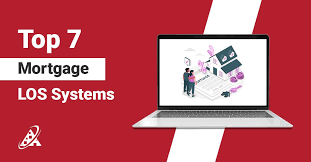The Importance of a Transmission Flush: Protecting Your Vehicle’s Performance

Strong 8k brings an ultra-HD IPTV experience to your living room and your pocket.
A transmission flush is a crucial maintenance service that helps keep your vehicle’s transmission system in peak condition. The transmission plays a vital role in transferring power from the engine to the wheels, ensuring smooth gear shifts and overall vehicle performance. Over time, transmission fluid becomes contaminated with dirt, debris, and metal particles, which can reduce efficiency and lead to significant transmission problems. Performing a transmission flush at the recommended intervals can prevent costly repairs and extend the lifespan of your vehicle.
What is a Transmission Flush?
A transmission flush involves completely draining old, degraded fluid from the transmission system and replacing it with fresh, high-quality fluid. This process removes built-up debris, prevents overheating, and ensures that the transmission operates smoothly. Unlike a standard fluid change, which only replaces some of the fluid, a transmission flush removes nearly all of the old fluid, providing a more thorough cleaning.
Signs That You Need a Transmission Flush
If you experience any of the following issues, it may be time to schedule a transmission flush:
1. Slipping Gears
If your vehicle struggles to stay in gear or shifts unpredictably, dirty or degraded transmission fluid could be causing the problem. A transmission flush can restore proper fluid pressure and improve gear engagement.
2. Rough or Delayed Shifting
A healthy transmission should shift smoothly and effortlessly. If you notice hesitation, jerking, or rough gear transitions, old fluid may be affecting the performance of internal components.
3. Unusual Noises
Grinding, whining, or clunking sounds coming from the transmission are often a sign of low or contaminated fluid. A transmission flush can help eliminate these noises and restore proper function.
4. Dark or Burnt-Smelling Fluid
Transmission fluid should be bright red and have a clean, slightly sweet smell. If it appears dark, murky, or has a burnt odor, it’s a clear indication that a transmission flush is needed.
5. Transmission Overheating
Overheating is one of the leading causes of transmission failure. Clean fluid helps to cool the system and prevent excessive heat buildup, reducing the risk of damage.
Benefits of a Transmission Flush
Performing a transmission flush at regular intervals offers several advantages, including:
Enhanced Transmission Performance: Clean fluid ensures smooth and precise gear shifts, improving driving experience.
Prevention of Costly Repairs: Regular transmission flushes remove harmful contaminants that can lead to significant damage and expensive repairs.
Extended Transmission Lifespan: Fresh fluid reduces wear and tear, helping components last longer.
Improved Fuel Efficiency: A properly functioning transmission allows the engine to work efficiently, leading to better gas mileage.
Protection Against Overheating: Removing old fluid prevents sludge buildup and helps the transmission stay cool.
Best Practices for a Transmission Flush
To maximize the benefits of a transmission flush, follow these best practices:
Check Your Vehicle’s Manual: Every vehicle has specific recommendations for when a transmission flush should be performed. Typically, this service is needed every 30,000 to 60,000 miles, but always consult your owner’s manual for exact intervals.
Use the Correct Transmission Fluid: Different vehicles require specific fluid types. Using the wrong fluid can lead to serious damage, so always use the recommended type.
Inspect for Leaks and Damage: Before performing a transmission flush, check for leaks or worn-out seals that may need attention.
Seek Professional Service: While some experienced car owners may attempt a transmission flush themselves, it’s always best to have a professional technician perform the service to ensure it’s done correctly.
Conclusion
A transmission flush is a vital maintenance service that helps keep your vehicle running efficiently and prevents costly transmission repairs. By recognizing the signs of old fluid and following best practices, you can extend the lifespan of your transmission and maintain optimal vehicle performance. Don’t wait until you experience transmission problems—schedule a transmission flush as part of your regular vehicle maintenance to ensure a smoother and more reliable drive.
Note: IndiBlogHub features both user-submitted and editorial content. We do not verify third-party contributions. Read our Disclaimer and Privacy Policyfor details.







